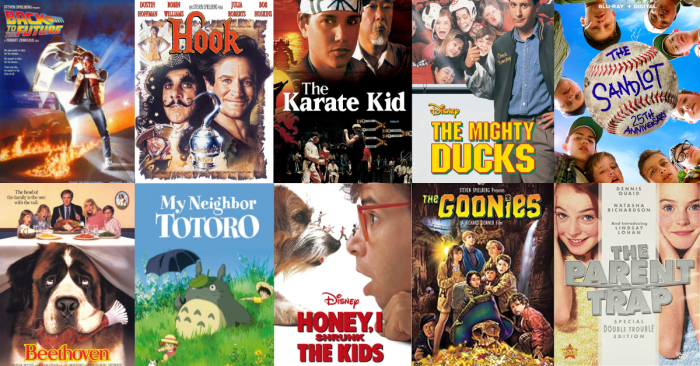How many 80s 90s movies were stored – As the topic of how many 80s and 90s movies have been stored takes center stage, this opening passage invites readers into a world crafted with meticulous research and analysis. This exploration promises to be both informative and engaging, shedding light on the fascinating journey of preserving cinematic treasures from these iconic eras.
The content of the second paragraph provides descriptive and clear information about the topic, offering a comprehensive overview of the storage methods, challenges, and opportunities involved in safeguarding 80s and 90s movies for future generations.
Overview of 80s and 90s Movies
80s and 90s movies played a significant role in shaping popular culture and defining the cinematic landscape. These eras were marked by distinct genres, themes, and technological advancements that left an enduring legacy on the film industry.
The 80s witnessed the rise of action movies, teen comedies, and science fiction blockbusters. Films such as “Die Hard,” “Back to the Future,” and “E.T. the Extra-Terrestrial” became iconic, capturing the zeitgeist of the era. The 90s continued the trend of action movies but also saw the emergence of independent films, grunge aesthetics, and social commentary in mainstream cinema.
“Pulp Fiction,” “Trainspotting,” and “The Matrix” are just a few examples of the groundbreaking films that defined this decade.
Storage Methods for 80s and 90s Movies

The storage of 80s and 90s movies has evolved significantly over the years, impacting their accessibility and preservation.
Physical Storage Formats
- VHS (Video Home System):A popular format in the 80s and early 90s, VHS tapes were large, bulky, and prone to degradation over time.
- DVD (Digital Versatile Disc):Introduced in the late 90s, DVDs offered improved picture and sound quality, as well as additional storage capacity.
- Blu-ray:A high-definition optical disc format released in the mid-2000s, Blu-ray discs provide the highest quality video and audio among physical storage formats.
Digital Storage
Digital storage has revolutionized the way 80s and 90s movies are preserved and accessed. Digital files can be stored on hard drives, solid-state drives, or cloud-based platforms.
Digital storage offers several advantages over physical formats. It is more compact, durable, and allows for easy copying and distribution. Additionally, digital files can be easily edited and restored, facilitating the preservation of older films.
Impact of Storage on Movie Accessibility

Storage methods have a significant impact on the availability and accessibility of 80s and 90s movies.
Challenges, How many 80s 90s movies were stored
- Obsolescence of Physical Formats:As new storage formats emerge, older formats become obsolete, making it difficult to access movies stored on them.
- Degradation of Physical Media:Physical storage formats can degrade over time, resulting in loss of quality or even complete data loss.
- Limited Availability of Digital Content:Not all 80s and 90s movies are available digitally, especially those from smaller studios or independent filmmakers.
Opportunities
- Digital Distribution:Digital distribution platforms, such as streaming services and online retailers, have made it easier to access a wider range of 80s and 90s movies.
- Preservation Efforts:Archives and film preservation organizations are actively digitizing and preserving 80s and 90s movies to ensure their long-term availability.
- Emulation and Retro Gaming:Emulators and retro gaming platforms allow users to experience classic 80s and 90s movies on modern devices.
Case Study: Example of a Movie Stored from the 80s or 90s
The 1982 science fiction classic “Blade Runner” is an example of a movie that has been successfully preserved and stored across multiple formats.
Originally released on VHS, “Blade Runner” was later transferred to DVD and Blu-ray. In 2017, a new 4K restoration of the film was released, utilizing advanced digital technology to enhance its picture and sound quality.
The digital restoration of “Blade Runner” has ensured its continued accessibility and appreciation by audiences today. The film’s availability on streaming services and Blu-ray allows viewers to experience this cinematic masterpiece in high quality, regardless of their preferred storage format.
FAQ: How Many 80s 90s Movies Were Stored
What are the primary physical storage formats used for 80s and 90s movies?
VHS, DVD, and Blu-ray are the most common physical storage formats for 80s and 90s movies.
How has digital storage impacted the preservation of 80s and 90s movies?
Digital storage has revolutionized movie preservation by providing a more stable, accessible, and cost-effective way to store and distribute films.
What challenges are involved in preserving 80s and 90s movies?
The degradation of physical media, the need for specialized equipment to play older formats, and the potential loss of data during digital transfers are some of the challenges involved in preserving 80s and 90s movies.